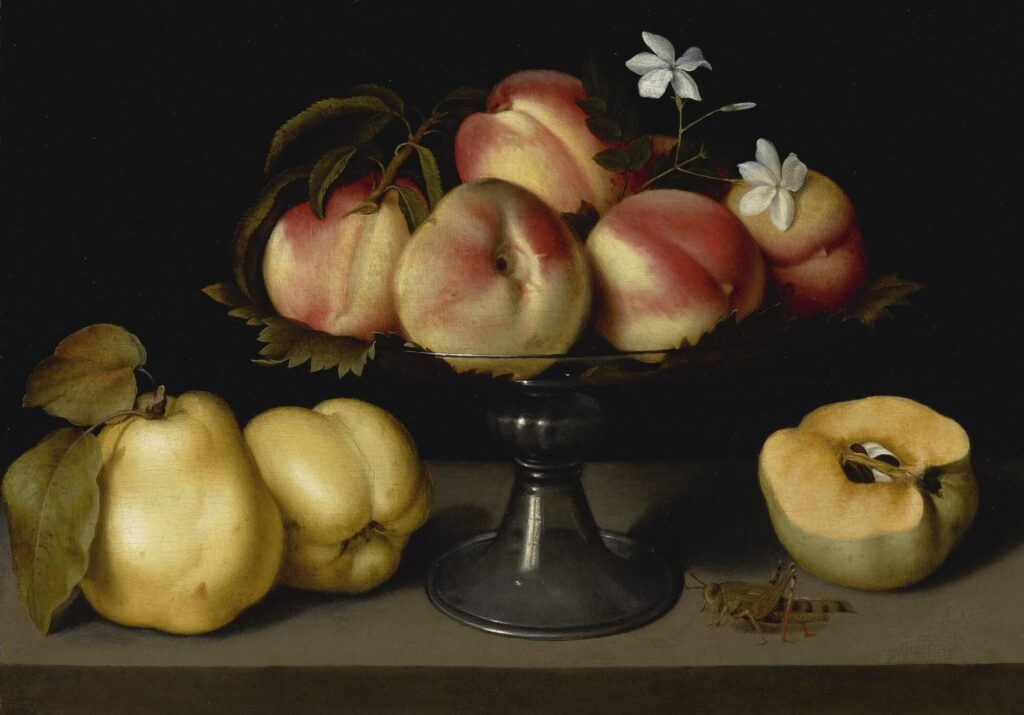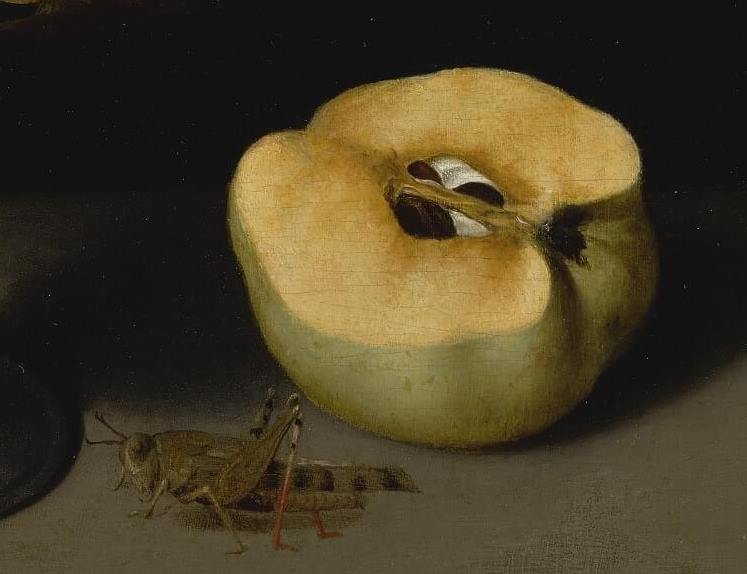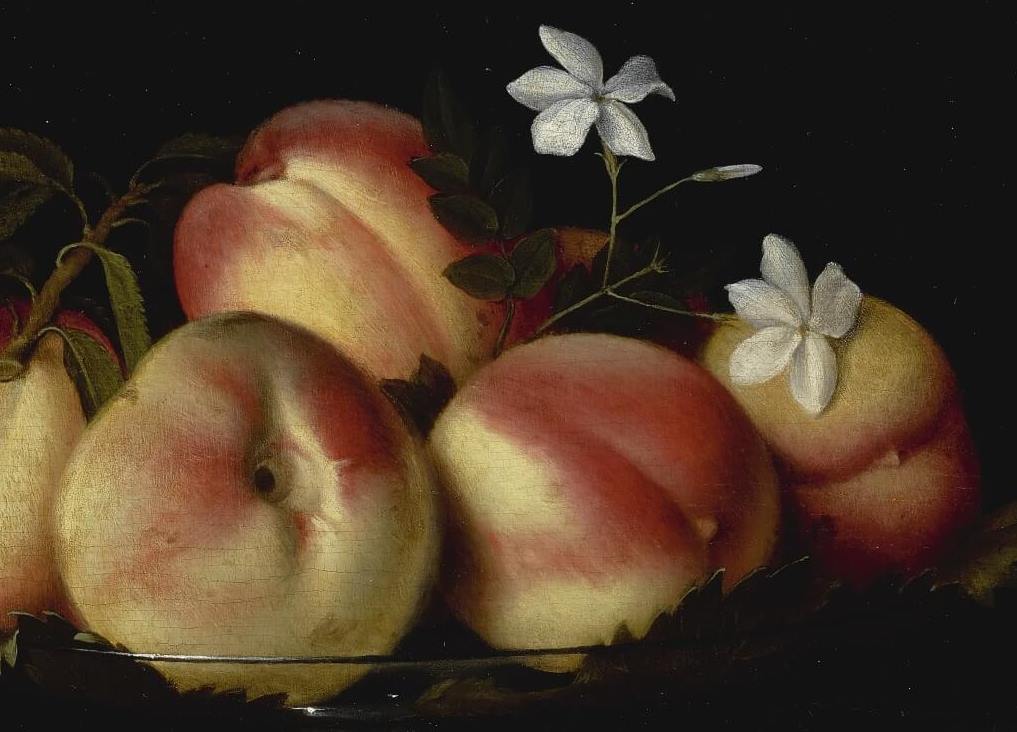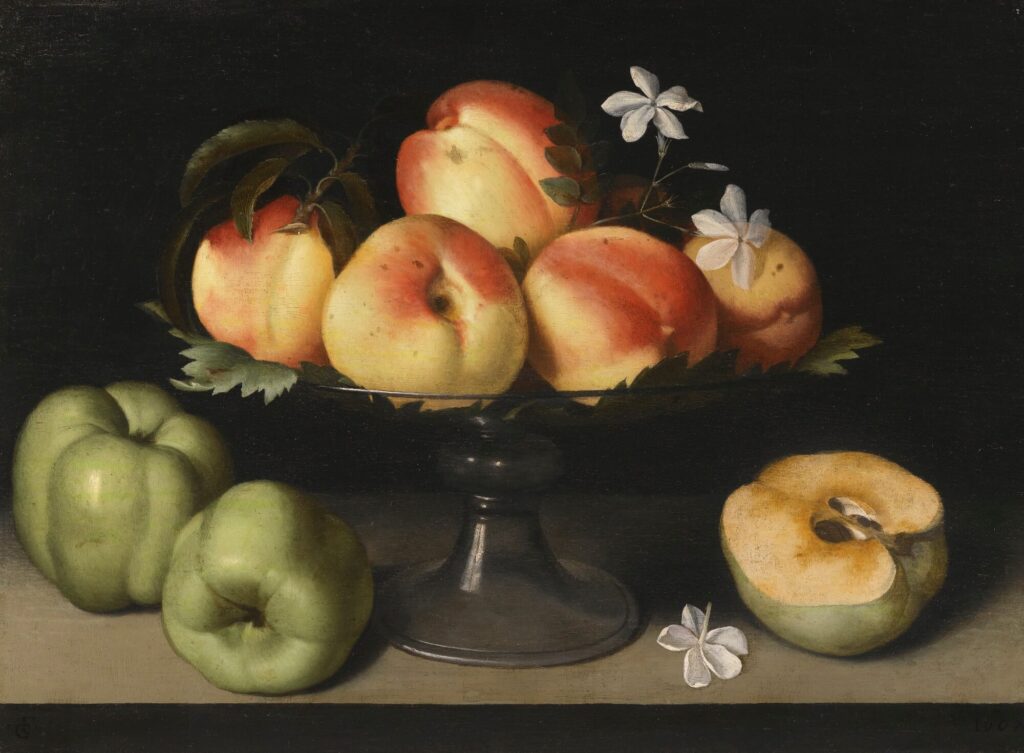Masterpiece Story: Sky Blue by Wassily Kandinsky
As Europe burned during WWII, Wassily Kandinsky, who had fled Nazi Germany in 1933, lived as a recluse in his Neuilly-sur-Seine apartment. In that...
Javier Abel Miguel 8 January 2026
3 August 2025 min Read
Fede Galizia’s beautiful A Glass Compote with Peaches, Jasmine Flowers, Quinces and a Grasshopper is one of Italy’s first-ever still life paintings. Galizia was a pioneer in the still life genre, but few know her name or art today.
Fede Galizia (1578-1630) was a young prodigy who first achieved recognition at the age of 12. Although better known for her portraits and religious paintings, still lifes are her greatest contribution to art history. In fact, she helped to shape this genre well before the more-famous still life painters we know today. Her paintings are among the very earliest known still lifes by any Italian artist. Indeed, this one probably dates from the first decade of the 17th century. However, historically, Galizia has not received the credit she deserves. This is possibly because she painted fewer than 20 still lifes and rarely signed them.

A Glass Compote with Peaches, Jasmine Flowers, Quinces and a Grasshopper is one of at least five nearly identical Galizia still life paintings of the same arrangement. All have the same peaches, quinces, and jasmine flowers around the same glass compote in similar arrangements. However, this particular version is the only one to include an insect. It has been identified variously as a grasshopper or locust.

In addition to being an effective little touch of life, the insect is almost certainly symbolic of time, death, or sin. It could be a vanitas element, referencing death through the Biblical plague of locusts. However, its exact meaning remains elusive.
In general, Fede Galizia still life paintings impress with their highly-naturalistic details. Of particular note is their capture of textures, and the dramatic contrast of luminous fruit against dark backgrounds.

On January 30, 2019, Sotheby’s sold A Glass Compote with Peaches, Jasmine Flowers, Quinces, and a Grasshopper during an evening sale of master paintings, held in New York. The title of the sale was The Female Triumphant. Galizia’s painting appeared alongside works by Angelica Kauffman, Elizabeth Louise Vigée-Le Brun, and other 16th-19th century women artists. By heavily publicizing this event, Sotheby’s also helped to promote all these great women artists. The publicity must have worked because Galizia’s painting sold for over $2 million. So, it seems that people are starting to better appreciate this artist’s beautiful innovative naturalism.
Fede Galizia often invites comparisons with fellow female still life painters Clara Peeters and Giovanna Garzoni.

Bayer, Andrea ed., Painters of Reality: The Legacy of Leonardo and Caravaggio in Lombardy, New York: The Metropolitan Museum of Art, 2004, pp. 184-186.
Editors of Sotheby’s New York, “Fede Galizia Biography“, Sotheby’s. Accessed 6 Sep, 2020.
Editors of Sotheby’s New York, “Rewriting Art History: How Fede Galizia Brings Women Artists into Focus“, Sotheby’s, January 30, 2019. Accessed 6 Sep, 2020.
Editors of Sotheby’s New York, “Masterworks by Trailblazing Female Artists Spanning the 16th through the 19th Centuries“, Sotheby’s, November 16, 2018. Accessed 6 Sep, 2020.
Spike, John, “Catalogue Note“, Lot 55 in Old Master Paintings, Sotheby’s, April 6, 2006. Accessed 6 Sep, 2020.
DailyArt Magazine needs your support. Every contribution, however big or small, is very valuable for our future. Thanks to it, we will be able to sustain and grow the Magazine. Thank you for your help!